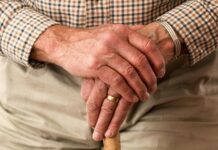Bird flu, specifically the H5N1 strain, has been causing widespread illness and death in U.S. dairy cattle. This outbreak has prompted Canadian scientists to call for increased surveillance measures to prevent the virus from spreading north.
Urgent calls for active surveillance in Canada
The Canadian Food Inspection Agency (CFIA) has not yet detected H5N1 in Canadian livestock. However, scientists warn that limited surveillance efforts leave the country vulnerable. Dr. Matthew Miller, an immunologist at McMaster University, emphasizes the critical need for a “robust national surveillance program” to stay ahead of the outbreak, he said to CBC.
Experts recommend a multi-pronged approach. This could include wastewater surveillance, blood sample studies in cattle, and potentially nasal swabs in both cattle and people who work closely with them. Early detection is crucial, they warn, because as the virus adapts it could potentially spread from human to human.
The unprecedented spread of H5N1 to dairy cattle in the U.S. raises concerns about its potential to jump to humans. One human case linked to the outbreak has already been reported in the U.S., though scientists suspect more infections might be undetected.
Research also shows a high death rate (around 50%) among farm cats exposed to the virus through infected milk products. This raises further concerns about mammal-to-mammal transmission.
While the CFIA says it is not currently testing milk for the virus, some scientists argue for including milk surveillance in preventative measures. They acknowledge limitations due to dilution from multiple farms contributing to the milk supply, but believe positive tests would necessitate more aggressive farm-level investigations.
The U.S. Food and Drug Administration (FDA) recently detected viral remnants of H5N1 in one out of five milk samples tested. However, they maintain that pasteurization renders milk safe for consumption.
Next steps for Canada
Canadian experts urge for clear government support for testing in cattle. Veterinarians and farmers need financial backing to incentivize participation in a comprehensive testing program, Dr. Scott Weese of the University of Guelph argues.
“If farmers have to pay for sampling and testing, and don’t know what will happen if there’s a positive, and have no direct personal gain from it, why would they do it voluntarily?” he said to CBC.
“We need a clear program that supports good testing and supports farms.”
Canada has robust human testing for severe influenza infections, but there are some limitations. Dr. Allison McGeer of Sinai Health System highlights that although standard testing can detect influenza A, pinpointing the specific subtype like H5N1 might require additional lab work. This additional testing would likely be triggered by a patient’s history of poultry or wildlife contact.
McGeer said she’s “personally hoping we are not going to get caught off guard” here in Canada.
The lack of a perfect system for human testing stresses the importance of heightened surveillance efforts to prevent the spread of H5N1 in Canada. Canadian health officials are hopeful that by being proactive, we can be prepared for this virus.








































